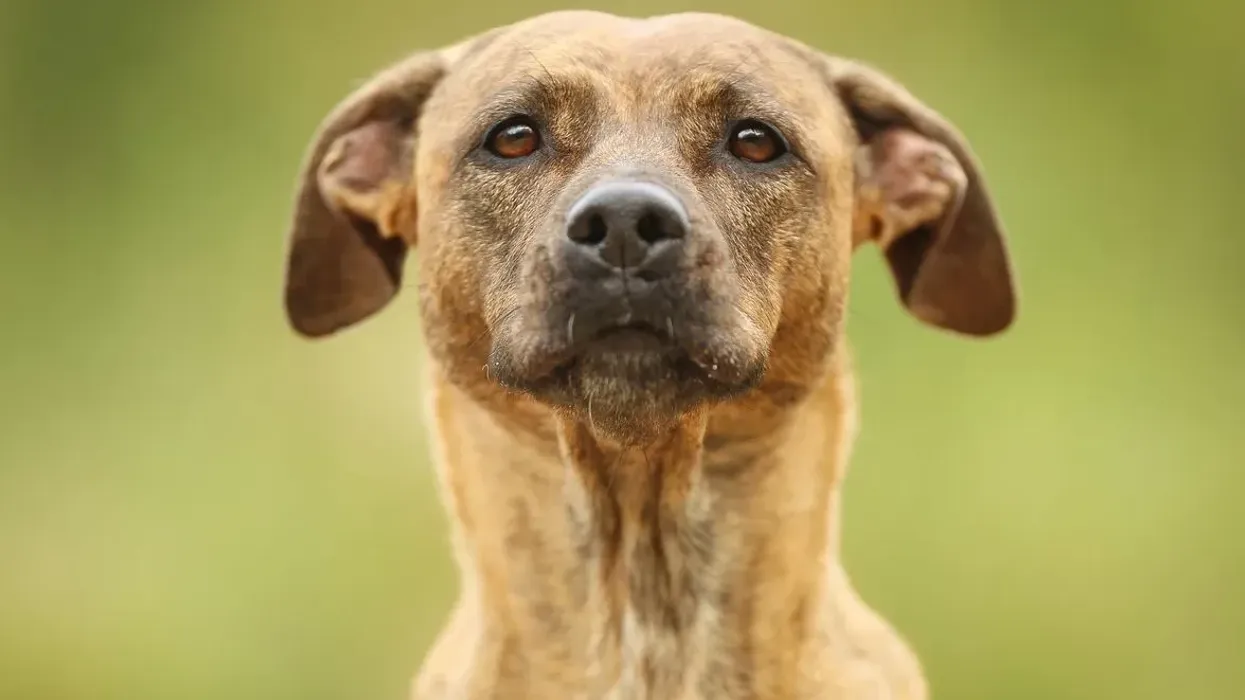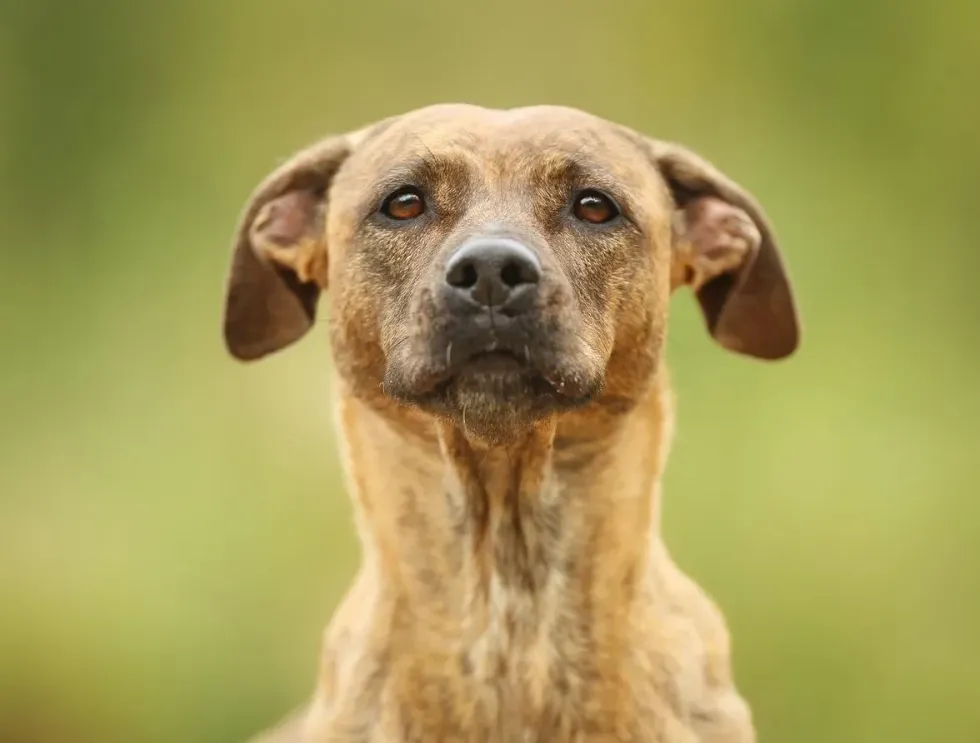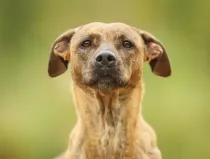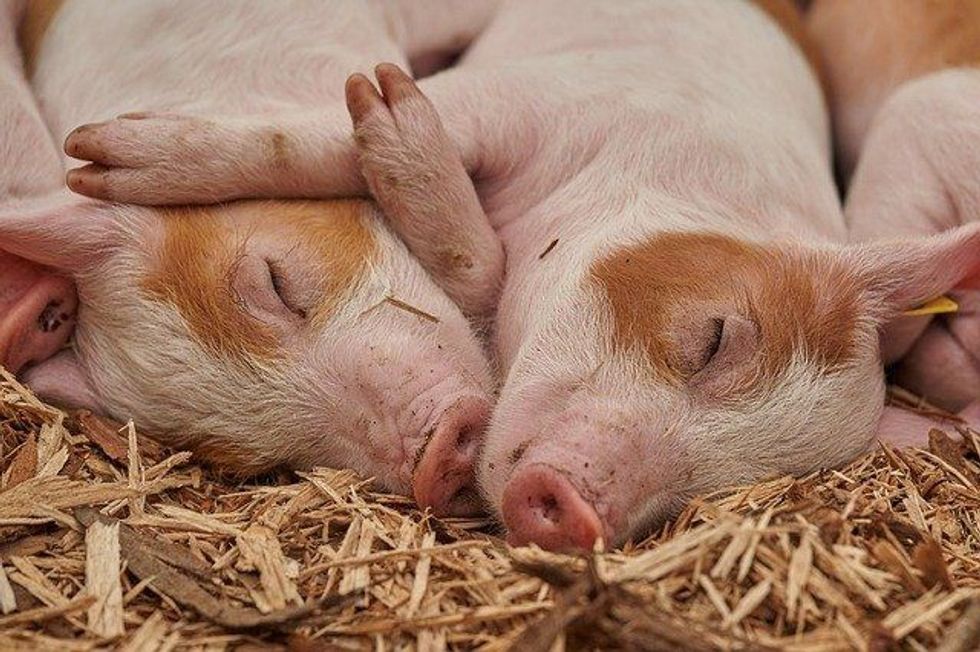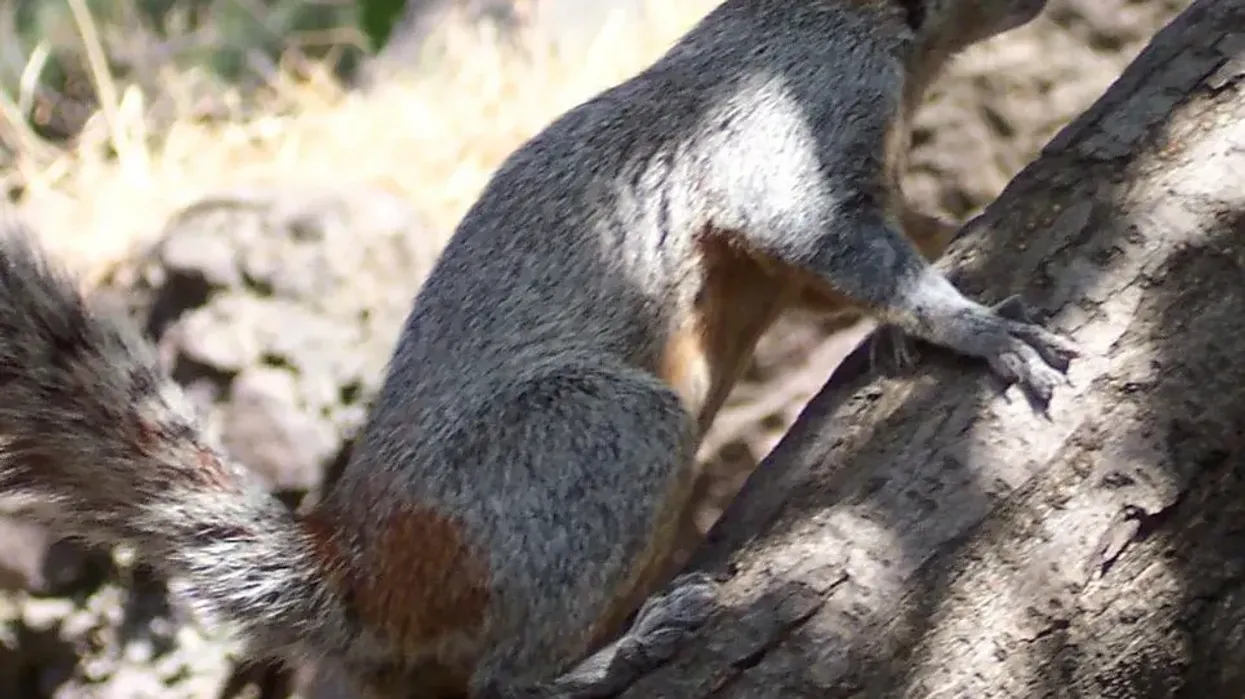Fun Greyador Facts For Kids

If reading about various mixed breed dogs excites you, then this is the right place to be. First, let us talk about greyadors, also known as greyhound lab mix or greyhound mix dog breed.
This dog breed is a cross of the labrador retriever and the greyhound (parent breeds). They were initially found in the United Kingdom.
However, with time, they made their way to the United States of America and eventually to the whole world. This greyhound mix of dogs are medium to large-sized dogs and are proved to be very efficient family as well as guard dogs.
Their gentle yet strong personality makes them fit for both orientations accordingly. In addition, greyhound mix dogs are known to be quite adaptive (they can adapt very well to their surroundings), which, in turn, helps them to survive better.
These dogs have quite a pleasant temperament and traits, i.e., they are known to be very sweet and friendly, be it towards the family members, the kids, or the strangers. However, they are very sensitive, and therefore their training sessions must be planned carefully.
They are also known to suffer from separation anxiety and don't like being left alone away from their human parents. These dogs are known to shed and drool quite a lot and tend to bark or howl.
They have high energy levels, which demands higher physical activity graphs; these dogs inherit these high energy levels from their parent breeds. Continue reading further for more interesting lab mix greyador facts.
If you liked this mix greyador information, then you must also give a read to labrador retriever facts and Great Dane facts.
Greyador Interesting Facts
What type of animal is a greyador?
The greyhound lab mix, also called a greyhound lab mix greyador, is one of the mixed-breed dogs. It is a mix of two-parent breeds, namely, the greyhounds and the labradors.
What class of animals do greyadors belong to?
The greyadors belong to the Mammalia class of the Animalia kingdom. Greyadors are known to give birth to about 11-14 young ones, which is the largest litter size of their breed.
How many greyadors are there in the world?
Since this breed of dog is a mixed breed, keeping a count of the exact population of greyhound lab mix breed (greyhound mix) dogs in the world is quite a task. They are, for the most part, bred according to demand like most mixed breeds.
However, based on their easy availability and their adaptability power, we can infer that they are present in abundance. The exact number, however, remains unknown.
Where does a greyador live?
The greyadors prefer living in temperate climatic conditions. The bodies of these dogs are not meant for tolerating extremely cold or extremely hot weather conditions. The history of these greyhound mix dogs can be traced down to the history of the United Kingdom. However, in the present times, they can be easily adopted from any dog shelter worldwide.
What is a greyador's habitat?
This greyhound lab mix usually prefers living in open areas with a lot of open space to run around. If we were to talk about the temperature requirements, we would find that they are intolerant of extreme weather conditions.
When it comes to company, these dogs can easily cohabit with humans in an apartment or a house; the only requirement is a good walk routine.
Who does greyador live with?
These greyhound lab mix breeds' dogs prefer living in groups. They like to spend their time in packs of dogs (dogs of the same breed). These greyhound lab mix dogs love to cohabit with humans as well. However, these dogs tend to get attached easily and are known to suffer from separation anxiety when left alone.
How long does a greyador live?
The life span of a greyador is known to be approximately ten to 13 years.
How do they reproduce?
The reproduction cycle in a female dog is divided into four main stages under a subset of two heat cycles (one after every six months). The number of days that the female dog spends in the heat cycle could be marked as the most fertile days for her to conceive.
Males, on the other hand, don't have any heat periods. Instead, they are known to respond to the female dog's heat cycles (chase them).
A labrador is known to have a heat cycle of two to three weeks, while the heat cycle in greyhounds lasts for approximately two to four weeks. The four stages of breeding can be named proestrus, estrus, diestrus, and anestrus.
The very first stage, proestrus, marks the beginning of the heat cycle. The female dog tends to attract a male dog during this period.
The estrus phase is the main phase where the female dog attracts a male dog and further accepts him (ovulation occurs in this stage).
Furthermore, the third stage, the diestrus stage, in this stage, either the female dog is known to be pregnant or is just in her resting phase. Eventually, the last stage, the anestrus stage, is the gap between diestrus and the next heat cycle.
After the female dog is pregnant, the offspring are given birth after a gestation period of about 70 to 80 days.
What is their conservation status?
It is a domestic mixed-breed dog, so its conservation status is Not Evaluated.
Greyador Fun Facts
What does greyador look like?

The greyador (a mixed breed of labrador retriever and greyhound, also called the greyhound labrador) has a body full of soft, beautiful fur (coat). The body coat of these dogs (greyhound lab mix) comes in various color dips, namely, fawn, black, blue, silver, grey, brindle, brown, and red.
These beautiful shades of coat make them look all the more adorable.
The density of the fur is quite high, while the length of the same is known to be moderate. The most common coat color among the puppies is bridle as well as brown.
The greyhound lab mixes are known to shed a lot, so their coat requires constant grooming sessions. However, taking care of them (i.e., grooming their fur) is an easy task.
Further, these dogs inherit their physique from their parent breeds (labradors and greyhounds). They are very well built and are categorized as medium to large-sized dog breeds. An average greyhound lab mix dog is known to weigh around 50-80 pounds (22-36 kg) with an average height of 20-27 inches (50-68 cm).
They have a long head, elongated ears reaching their jaws, with a deep chest going down to a narrow waist. Their build helps them run faster and gives them an overall strong, sturdy look.
How cute are they?
Greyhounds labradors mix puppies are the most adorable creatures one could ever come across, just like Greenland dogs. Their adorable black puppy eyes can make you fall in love with them all over again. These greyhounds labradors mix has long ears hanging till its jaw, making it look cuter.
Those adorable paws and soft, magnificent coats make you want to cuddle them. The wagging tail acts as a cherry on top. These precious creatures deserve all the love in the world!
How do they communicate?
Greyhounds labs' mixes use their barks, howls, and olfactory sense to communicate with other fellow greyhounds labs mixes. They also love to cuddle, expressing their love for you.
How big is a greyador?
Greyhounds labs mix could weigh around 50-80 lb (22.6 -36.2 kg) with a height of approximately 20-27 in (50.8-68.5 cm).
How fast can a greyador run?
The average gentle speed of a greyador could reach up to 40 mph (64.3 kph). Their physique is built for speed.
How much does a greyador weigh?
These dogs are categorized under medium to large-sized dogs. The average weight of a greyador recorded is known to be around 50-80 lb (22.6 -36.2 kg).
What are the male and female names of the species?
A male greyador is called a dog, while the female is called a bitch.
What would you call a baby greyador?
As far as a specific name for a newborn greyador is concerned, there exists none. However, they are generally referred to as greyhound lab mix puppies or greyhound mix puppies. People who adopt them as pets may call them different pet names.
What do they eat?
This breed of dog is known to have a high chase thrive. Although they don't usually prey on birds or mice, they love to chase them in the gardens. This breed requires a proper meal full of proteins and healthy fats. Proper food for a healthy life is a must for this breed.
Are they slobbery?
One of the most common characteristics of a greyhound lab mix breed is that they tend to drool a lot, be it after walks or after long training sessions. You may expect there to be a lot of drool.
Prepare yourself with a cloth to wipe it all off. However, if there's a significant change in the drooling pattern of your dog, then you must consult a doctor to ensure a healthy life.
Would they make a good pet?
Greyadors are known for their sweet and friendly nature, and it is because of their friendly nature and their will to play that helps them get along with children quite well. Further, this affectionate nature of theirs makes them a good pet as well. Therefore, you can expect these pets to be your loyal, caring, and loving companions.
Did you know...
A whipador (whippet lab mix) weighs up to 25-80 lb (11.3-36.2 kg) with an approximate height of 18-24 in (45.7-60.9 cm).
Greyadors tend to bark. They are very vocal animals with great temperaments and traits.
Are lab hound mix good dogs?
A greyhound cross is called a greyador. These greyador dogs are known for their affectionate and caring nature and their great temperament and traits.
They are known to be quite social and mix easily, making them good family dogs for owners. They not only love spending time with their human parents but are known to be quite protective about the human kids too.
They are known to share a sense of belonging and are loyal to their owners. They love exercise and walks! They also love children.
Further, although both the parent breeds, i.e., the labrador and greyhound, are not really a guard dog breed, both of these breeds have a general guarding instinct, and hence their mix can be used to guard people and children against intruders.
These dogs are a real mix of a guard and a family dog and can switch between the two roles easily. Their calm, as well as peaceful nature, makes them a quality family dog.
On the other hand, their large body and protective instincts make them the perfect guard dog. They are a perfect example of gentle yet strong dogs blessed with the grace of a greyhound and with the athletic energy of a labrador!
Do greyador have health issues?
These dogs are generally very healthy and love to play. However, since this breed is a cross between a greyhound and a labrador, it faces a few similar health conditions that the parents (parent breed) face.
A few of the most common health problems this particular breed faces can be listed as bloat, neuropathy, hip and elbow dysplasia, obesity, and progressive renal atrophy. The owners of this puppy have to ensure that it gets optimum exercise to have great health.
As much as one loves spoiling their dog with the best treats simultaneously, it is primary for the owners to keep a check on your dog's health by ensuring a good amount of evening exercise, even with children.
Here at Kidadl, we have carefully created lots of interesting family-friendly animal facts for everyone to discover! For more relatable content, check out these pomsky facts and dhole facts for kids.
You can even occupy yourself at home by coloring in one of our free printable greyador coloring pages.
We Want Your Photos!
More for You
See All
Bachelor of Commerce specializing in Accounting and Finance, Master of Business Administration

Divya RaghavBachelor of Commerce specializing in Accounting and Finance, Master of Business Administration
With a diverse range of experience in finance, administration, and operations, Divya is a diligent worker known for her attention to detail. Born and raised in Bangalore, she completed her Bachelor's in Commerce from Christ University and is now pursuing an MBA at Narsee Monjee Institute of Management Studies, Bangalore. Along with her professional pursuits, Divya has a passion for baking, dancing, and writing content. She is also an avid animal lover who dedicates her time to volunteering for animal welfare causes.
Postgraduate Diploma in Management

Sakshi RaturiPostgraduate Diploma in Management
Sakshi has experience in marketing strategy, social media planning, and recruiting industry experts for capstone projects, she has displayed a commitment to enhancing their skills and knowledge. She has won multiple awards, including a Certificate of Appreciation for Creative Writing and a Certificate of Merit for Immaculate Turut, and is always seeking new opportunities to grow and develop.
Disclaimer
1) Kidadl is independent and to make our service free to you the reader we are supported by advertising. We hope you love our recommendations for products and services! What we suggest is selected independently by the Kidadl team. If you purchase using the Buy Now button we may earn a small commission. This does not influence our choices. Prices are correct and items are available at the time the article was published but we cannot guarantee that on the time of reading. Please note that Kidadl is a participant in the Amazon Services LLC Associates Program, an affiliate advertising program designed to provide a means for sites to earn advertising fees by advertising and linking to Amazon. We also link to other websites, but are not responsible for their content.
2) At Kidadl, we strive to recommend the very best activities and events. We will always aim to give you accurate information at the date of publication - however, information does change, so it’s important you do your own research, double-check and make the decision that is right for your family. We recognise that not all activities and ideas are appropriate for all children and families or in all circumstances. Our recommended activities are based on age but these are a guide. We recommend that these ideas are used as inspiration, that ideas are undertaken with appropriate adult supervision, and that each adult uses their own discretion and knowledge of their children to consider the safety and suitability. Kidadl cannot accept liability for the execution of these ideas, and parental supervision is advised at all times, as safety is paramount. Anyone using the information provided by Kidadl does so at their own risk and we can not accept liability if things go wrong.
3) Because we are an educational resource, we have quotes and facts about a range of historical and modern figures. We do not endorse the actions of or rhetoric of all the people included in these collections, but we think they are important for growing minds to learn about under the guidance of parents or guardians.
